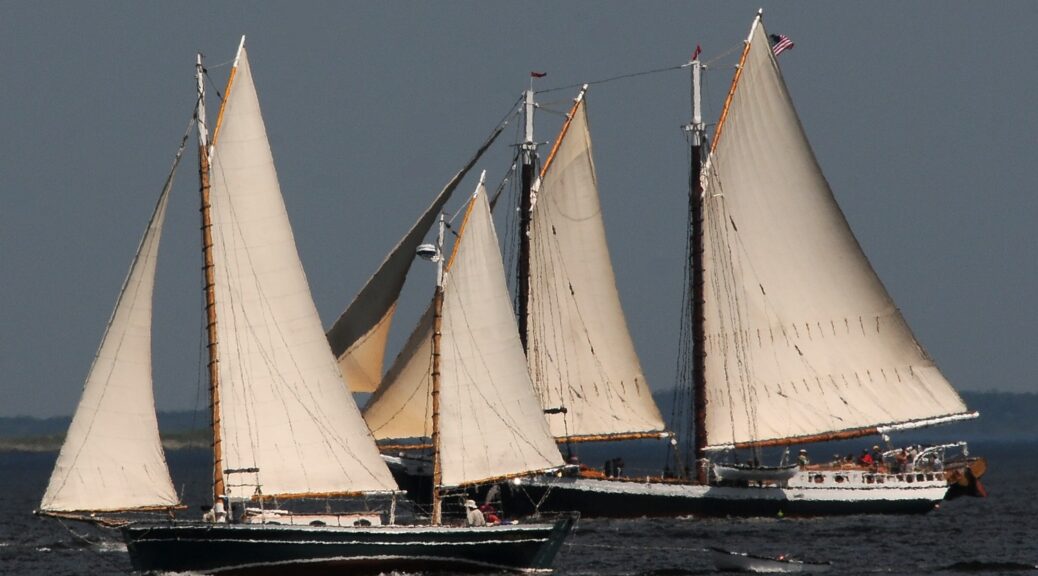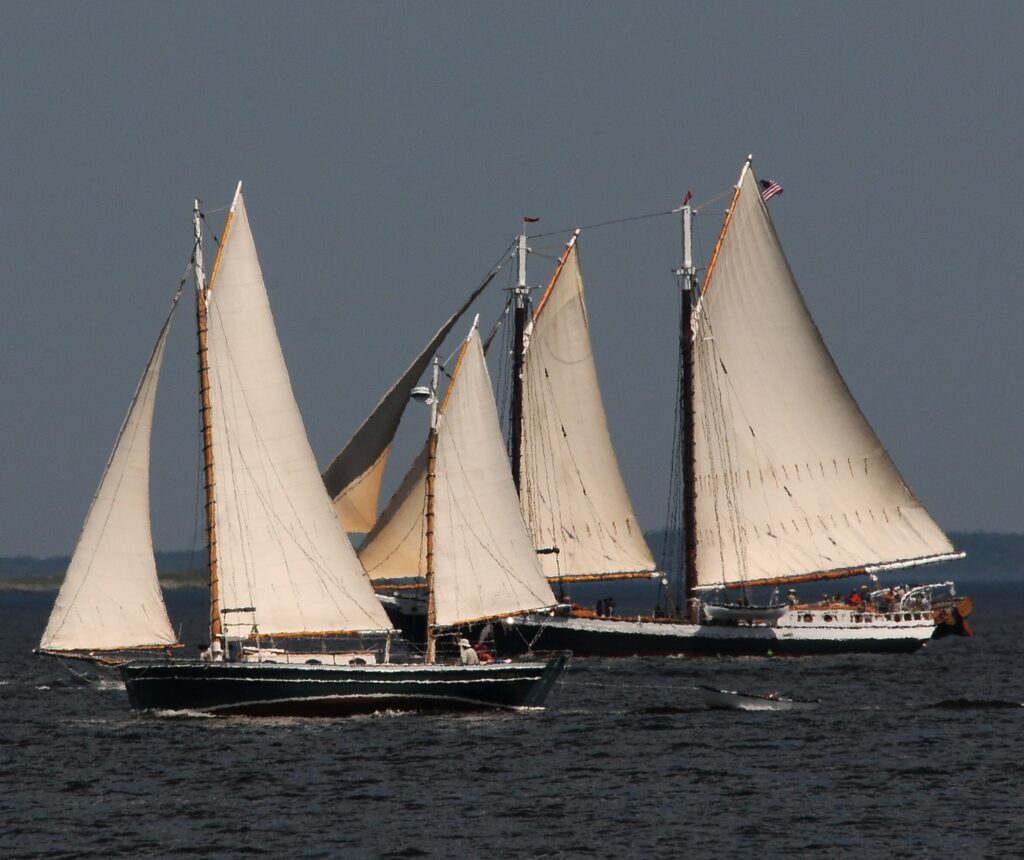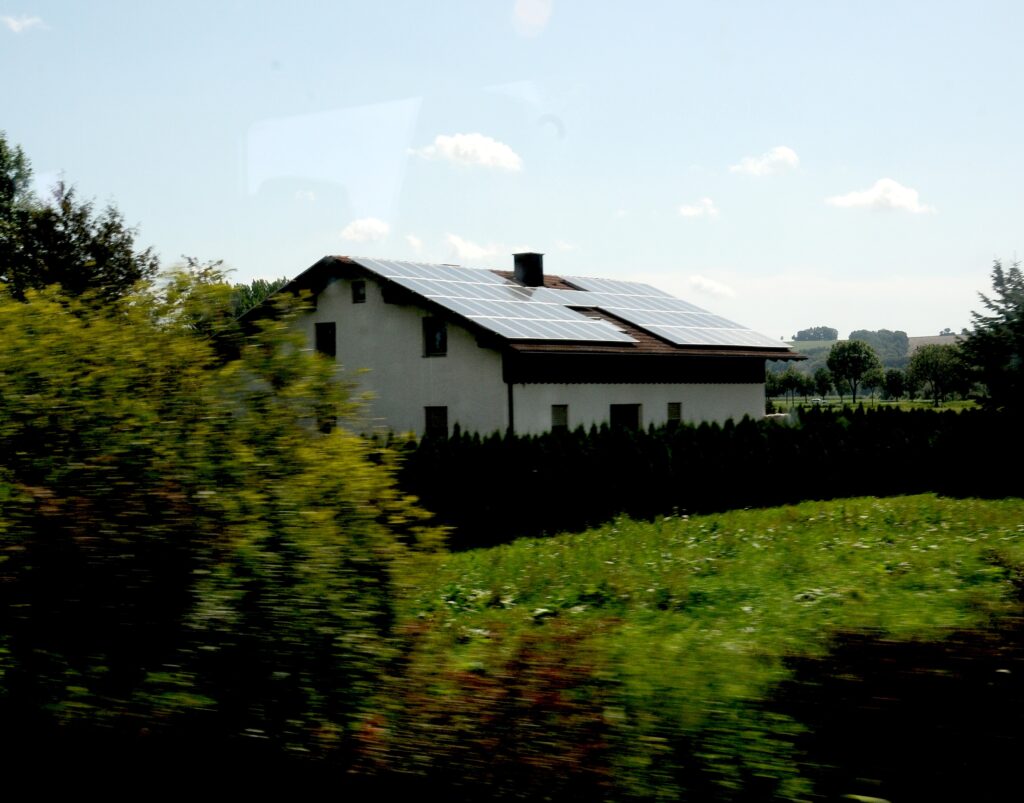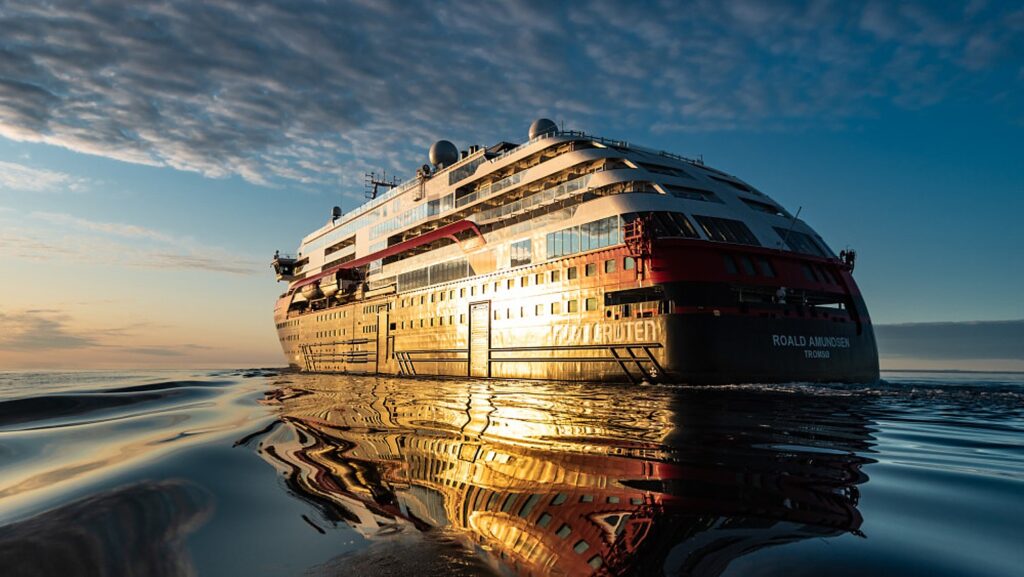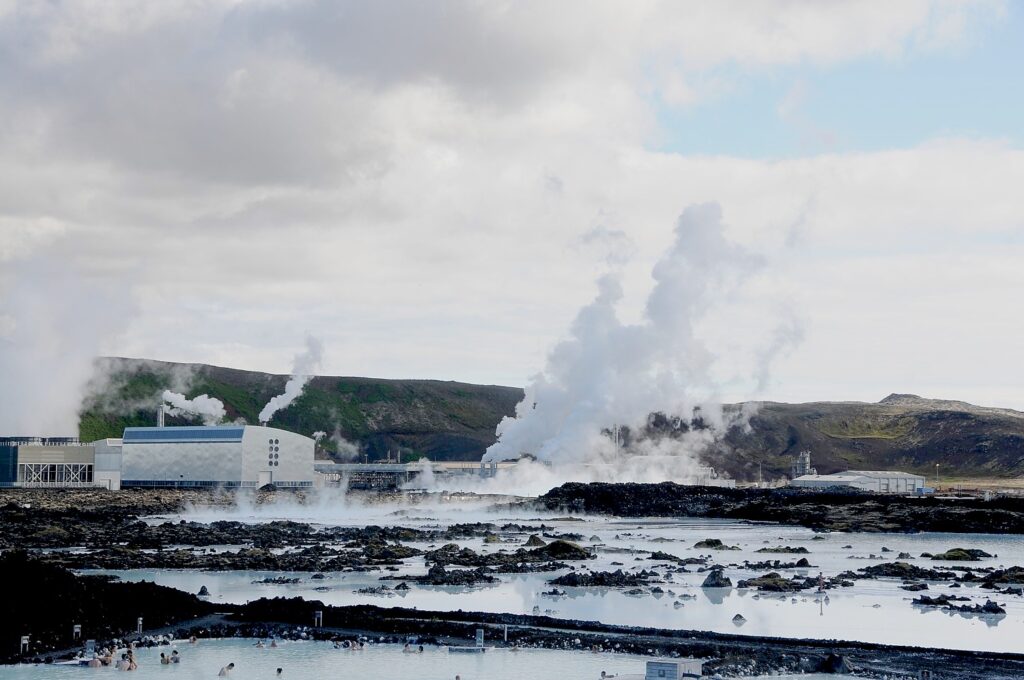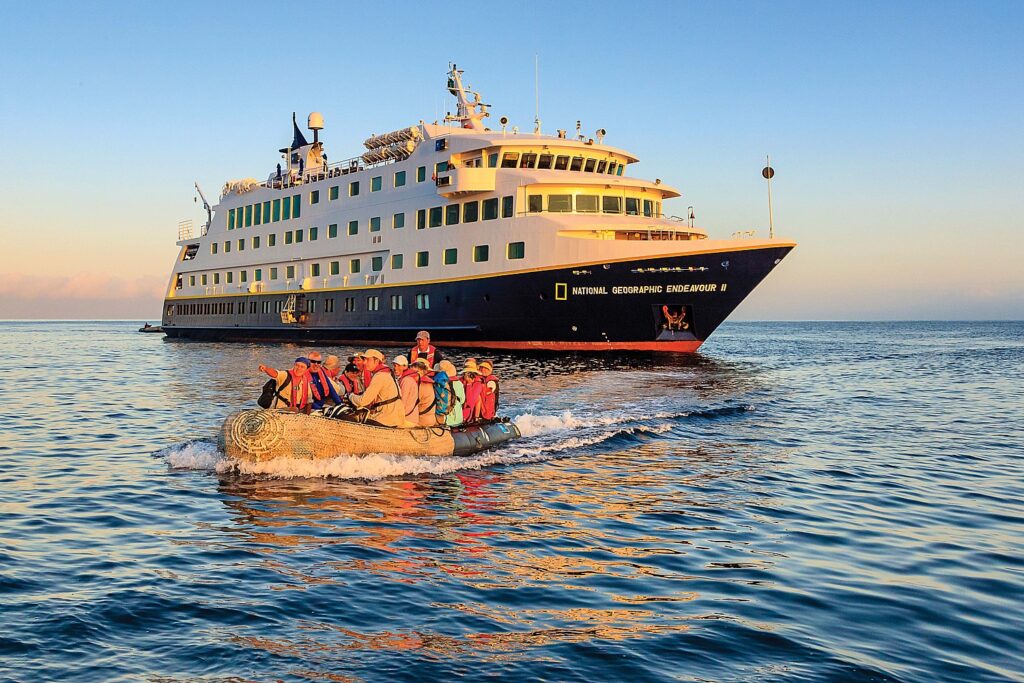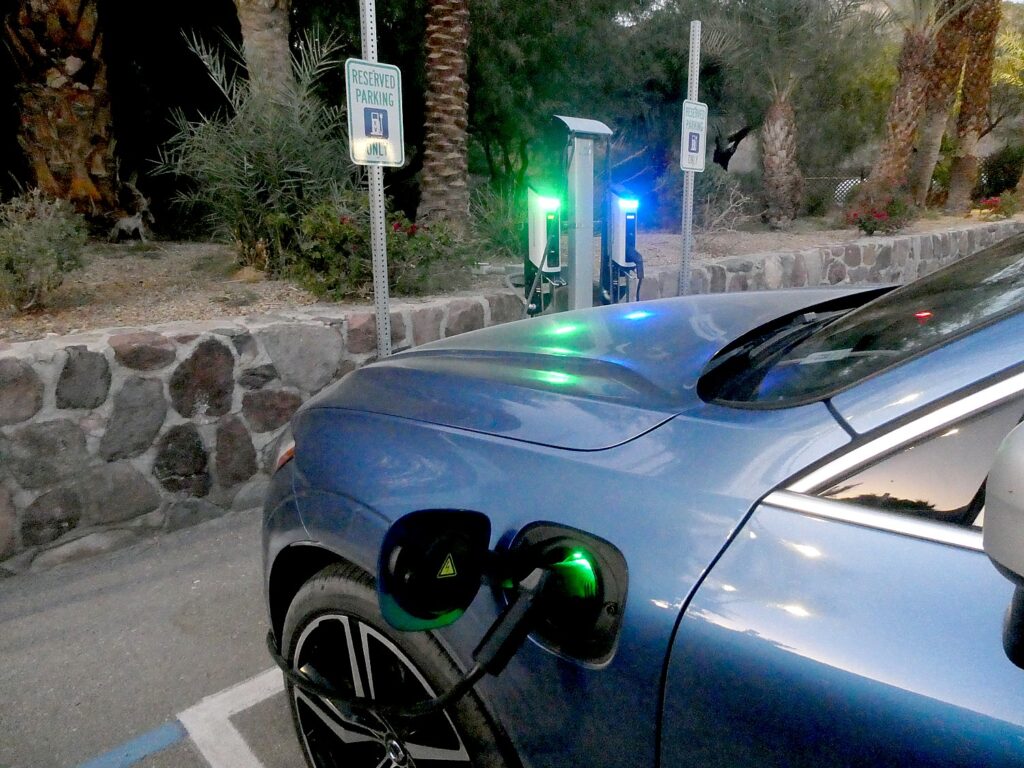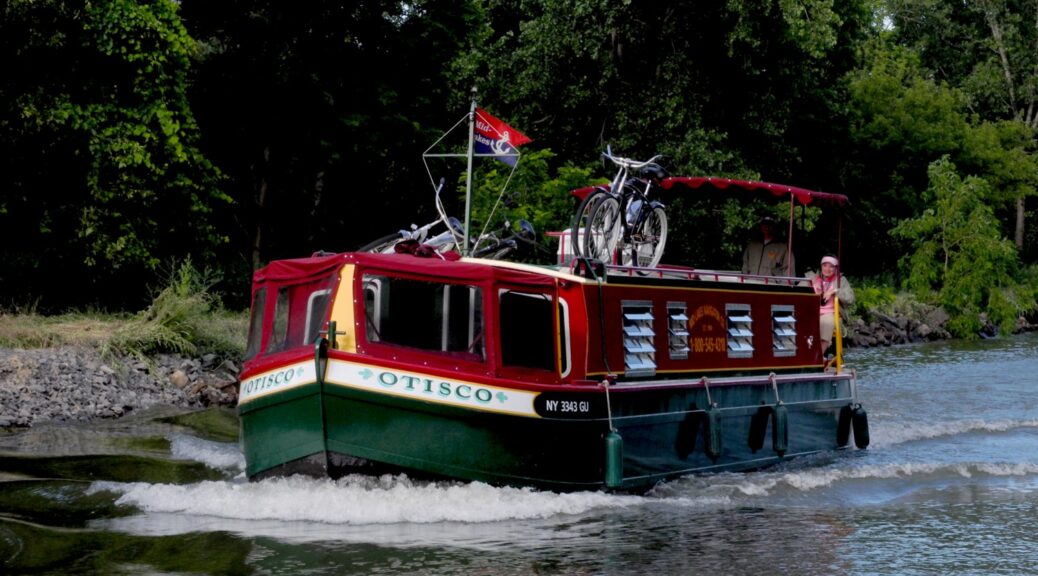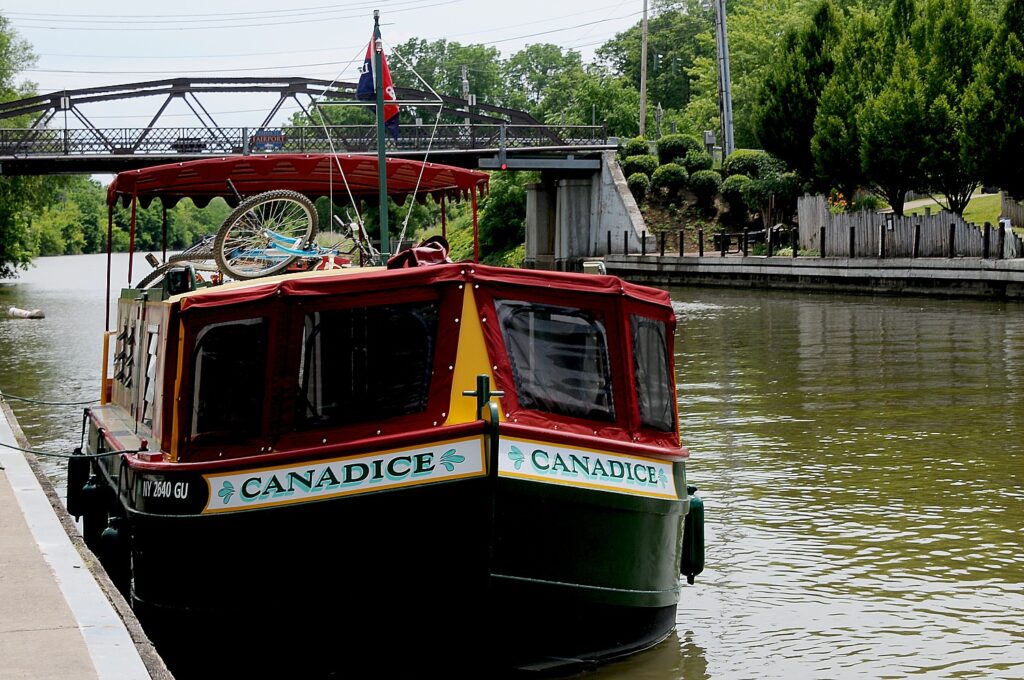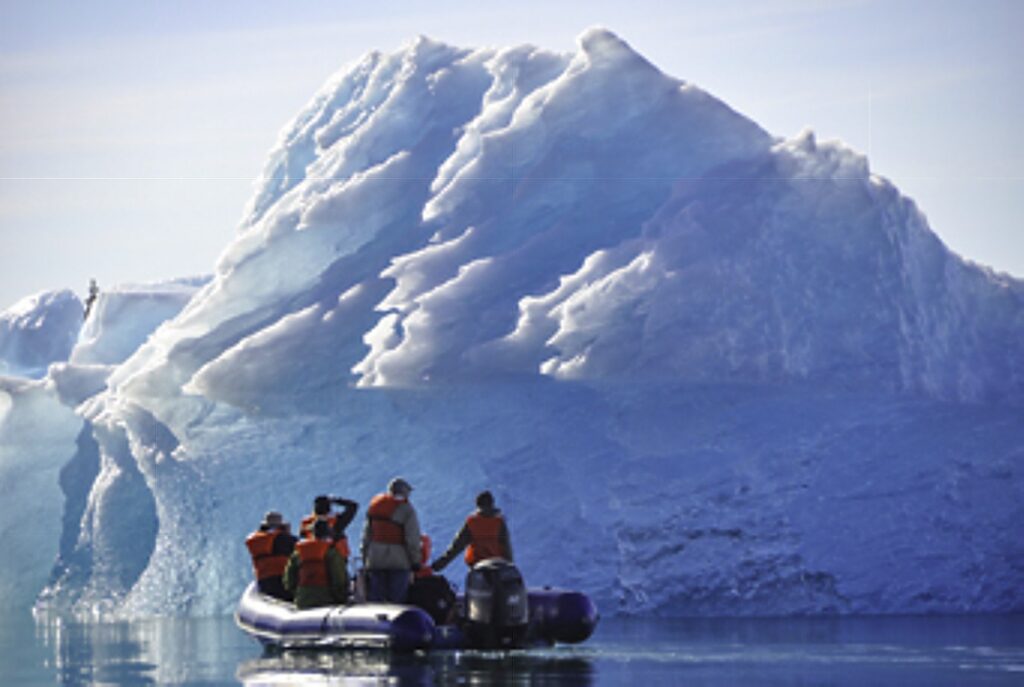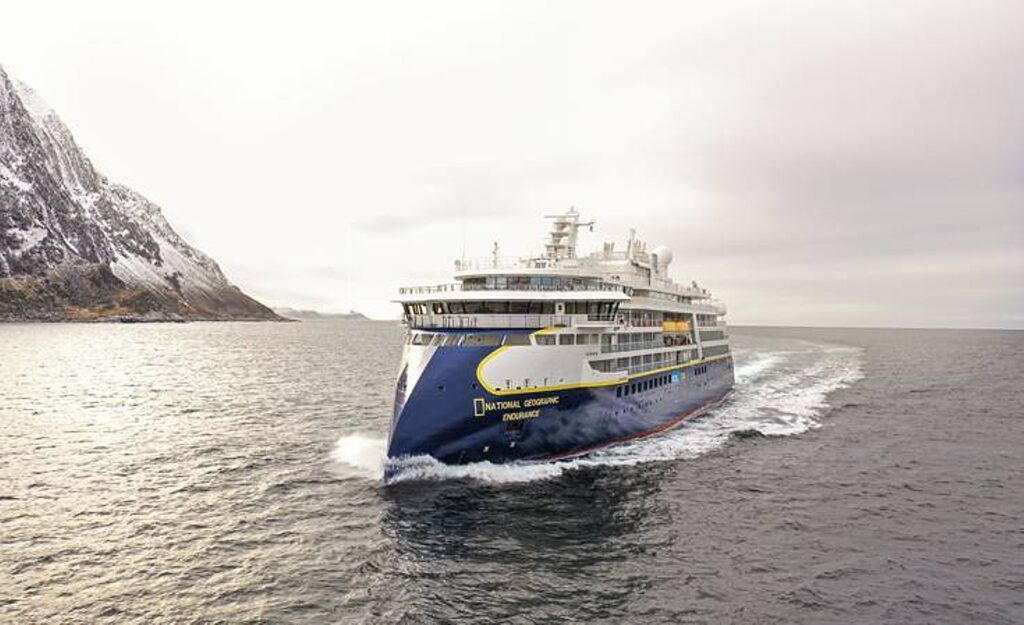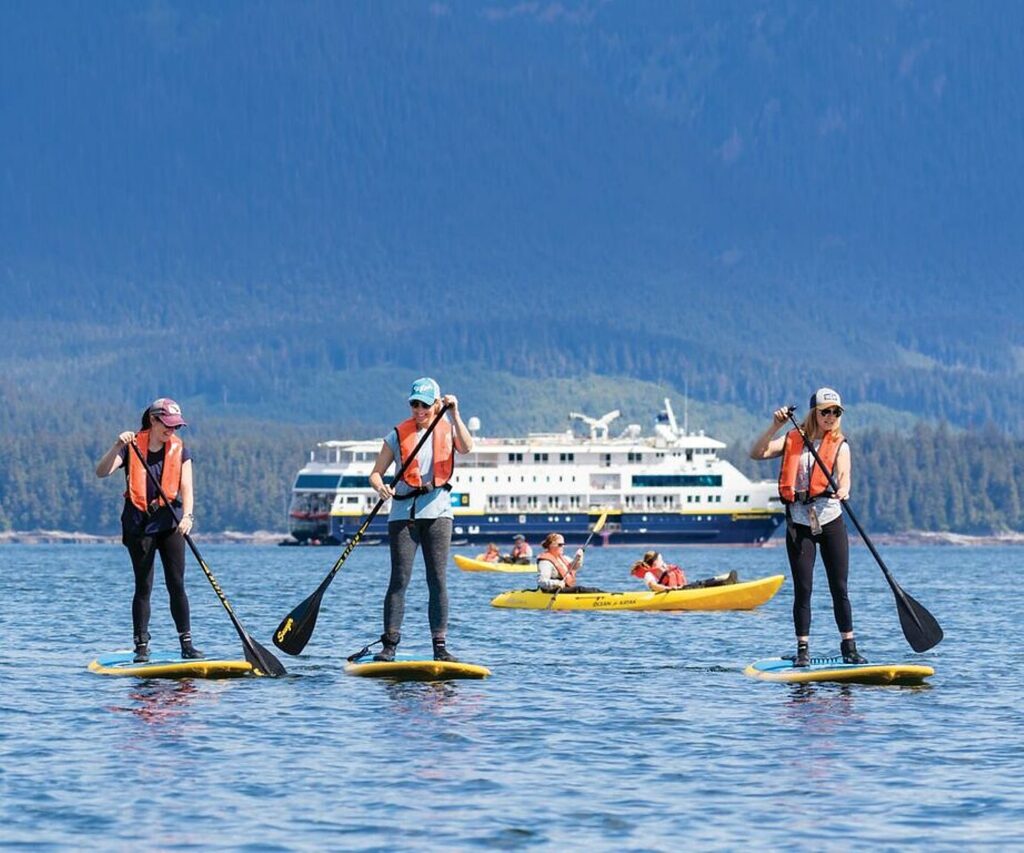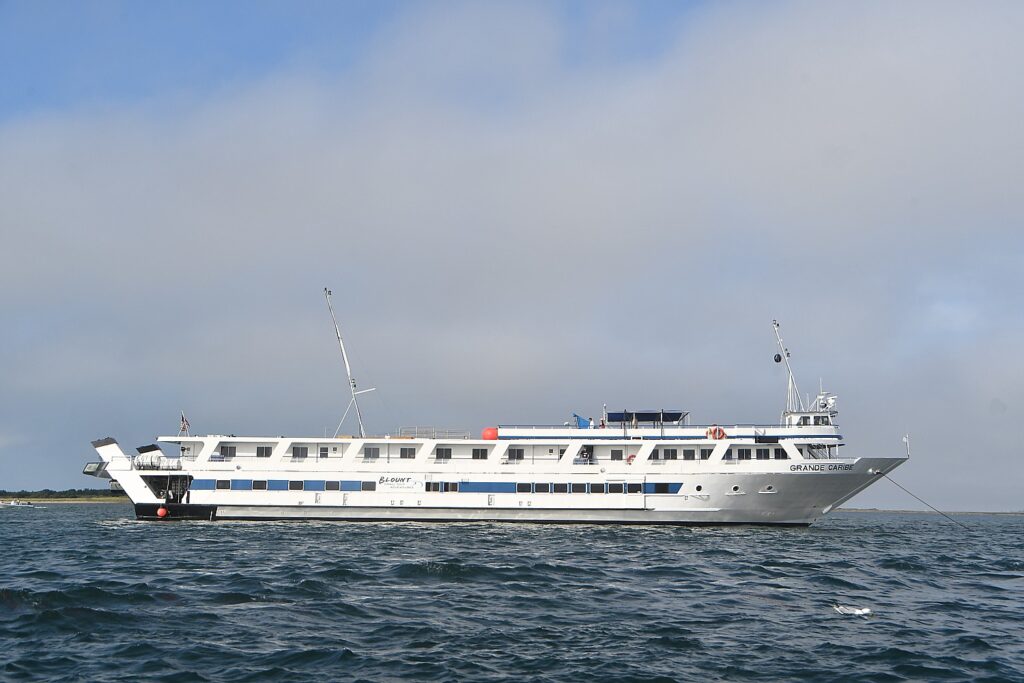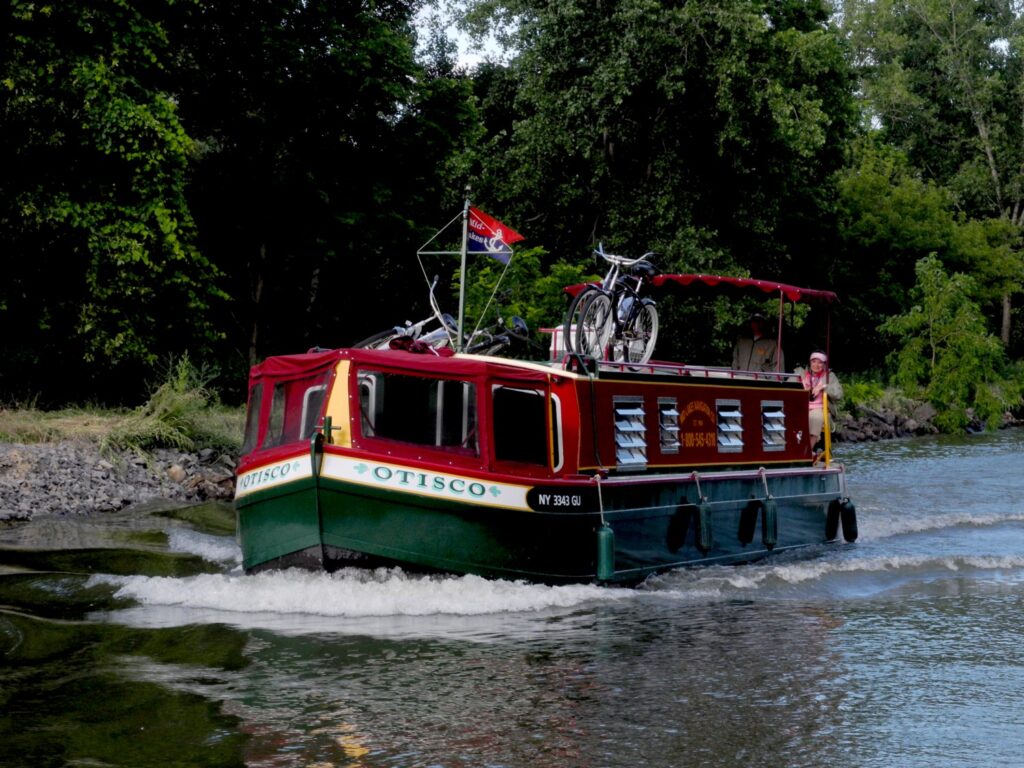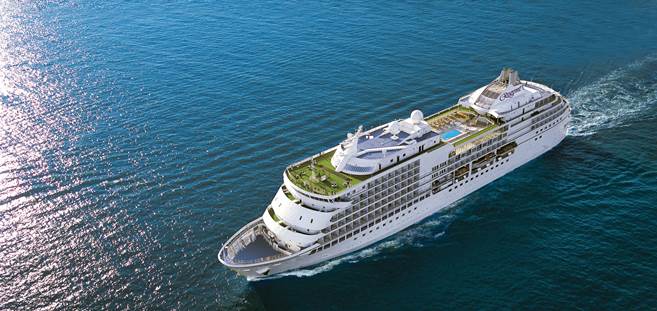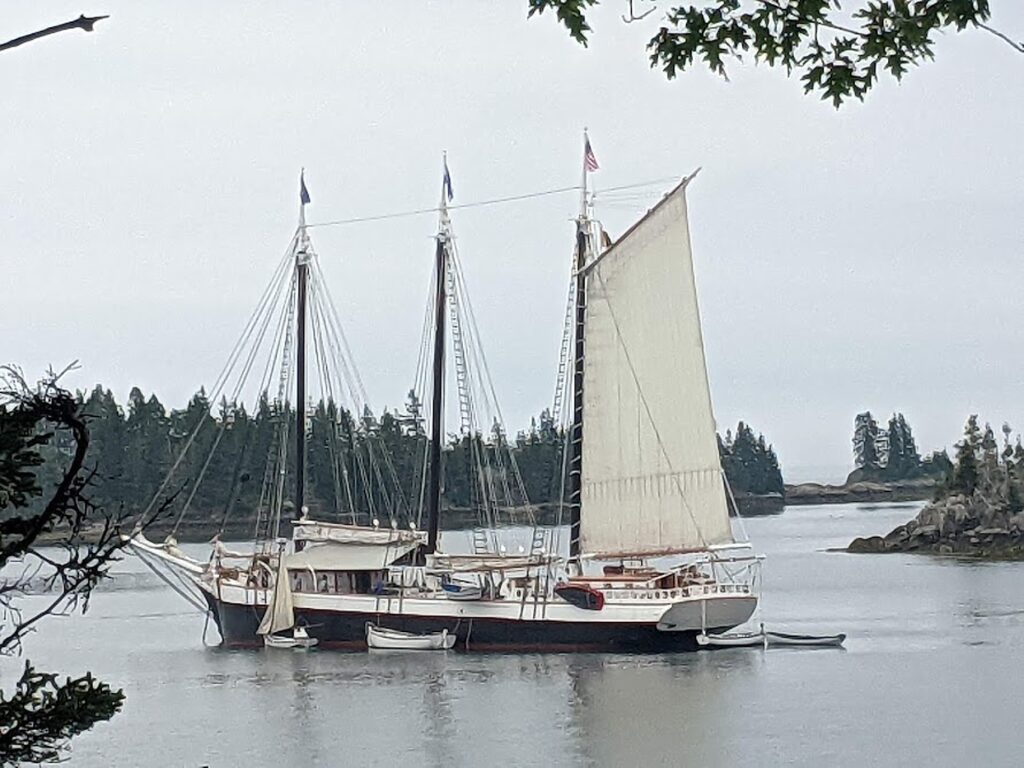
By Karen Rubin
Travel Features Syndicate, goingplacesfarandnear.com
There is a mystery to be unraveled, as intriguing as an Agatha Christie whodunnit, but without the murder and mayhem: How were the 26 passengers on the historic Maine Windjammer, Victory Chimes, who came from as far as California, Utah, North Carolina, Virginia, and Pennsylvania connected? And who among us is the interloper, unconnected to anyone else? Is it coincidence or providence that brings us together?
The mystery provides marvelous intrigue during the course of the six-day cruise sailing from Rockland, Maine, among the islands of Penobscot Bay.
A windjammer cruise is as much about experiencing the thrill of the Great Age of Sail, when these mighty schooners sailed with the wind and waves to bring the timber, building stones and raw materials that built the nation – literally engines of the economy – as it is about reconnecting with the joys of simple pleasures as basic as conversation and song.
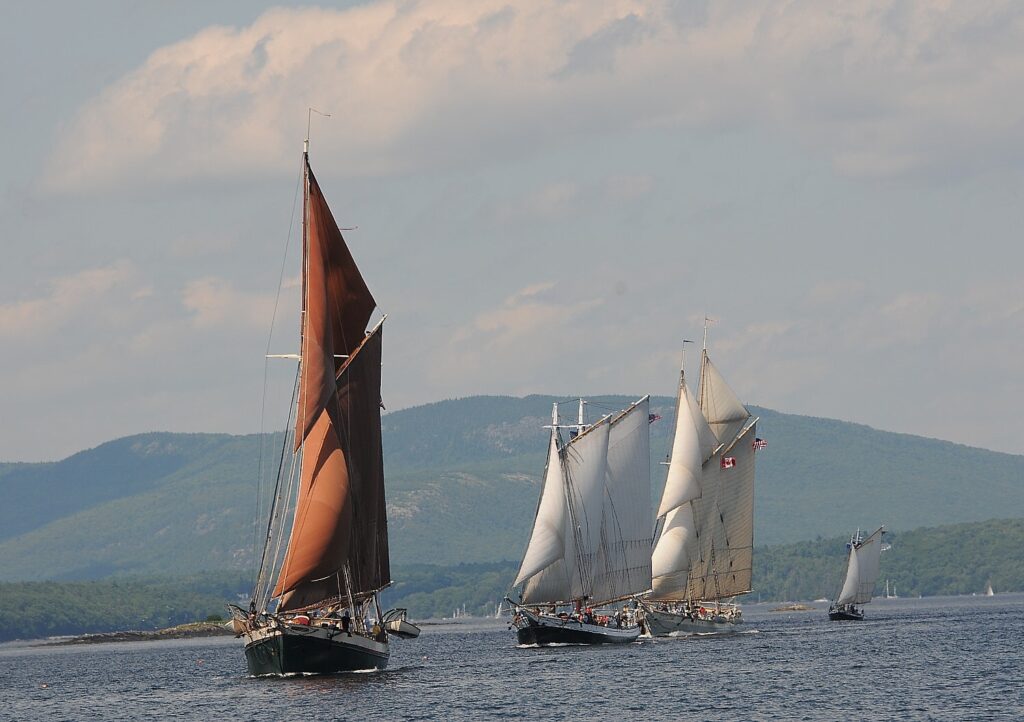
Song and storytelling, indeed, are the theme of this sailing (many Windjammer cruises have a theme or focus), which features music on Monday, Wednesday and Friday evenings by singer/songwriters Mike and Amy Aiken. And on another enchanting evening, several of us listen in as Mike and the multi-talented Chef Adam Travaglione (who is also a musician in addition to being a fabulous chef, raised in his family’s restaurant) compose a song honoring the legacy of the Victory Chimes. The Aikens have sailed up to Rockland on the boat they have lived on for the past 21 years from their homeport on the Chesapeake (a clue to solving the mystery).

Here in Maine are the largest concentration of these historic sailing ships in North America, nine of which are members of the Maine Windjammer Association, sailing out of Rockland and Camden.
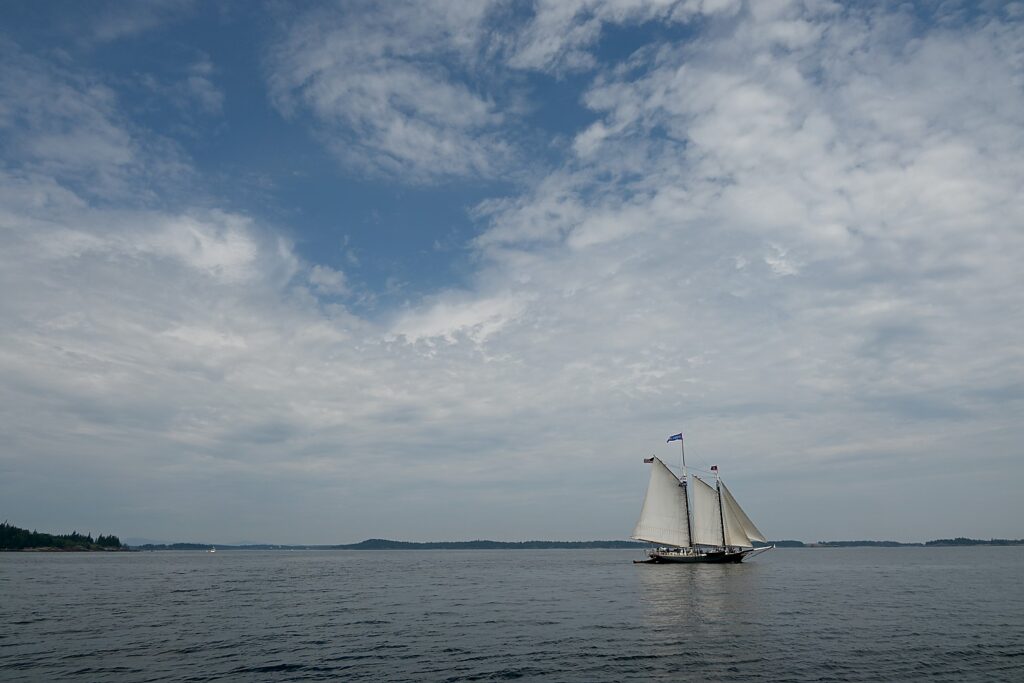
Each has its own story, its own character. And each sailing is different, even on the same ship – the product of the serendipity and alchemy of people (passengers as well as captain and crew), weather (which often provides the drama, whether because of fog or squall), and where we wind up anchoring. There is no itinerary. The captain sets course following the wind, weather and whimsy.
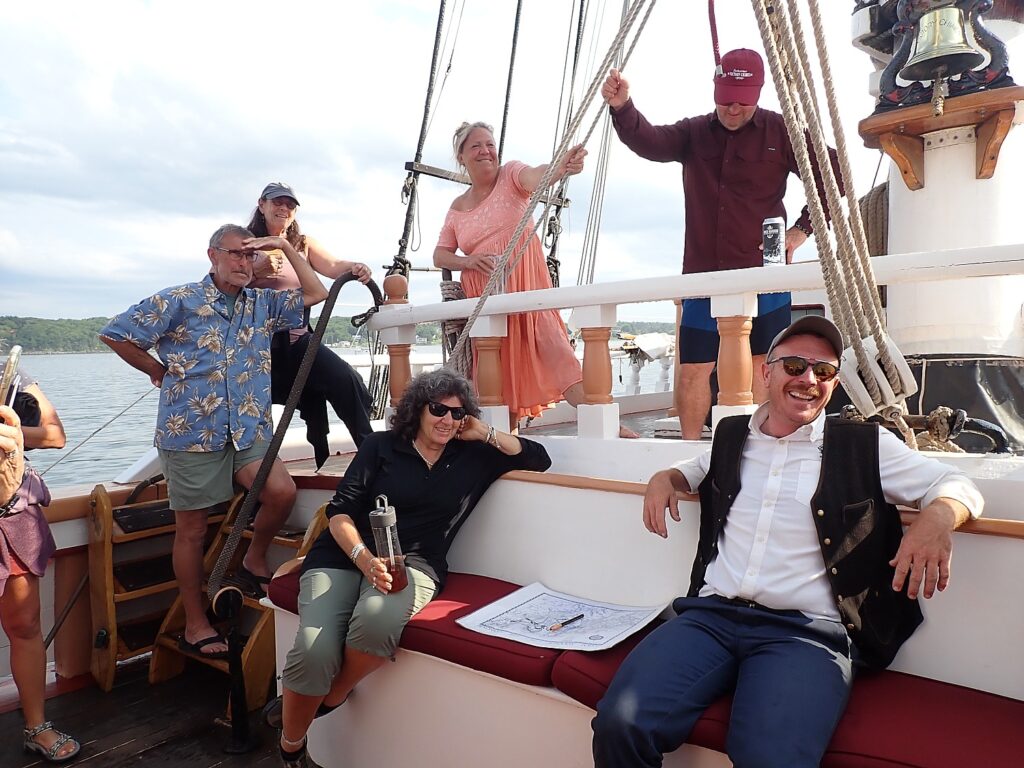
Each afternoon, after we drop anchor in some cove or harbor, Captain Sam Sikkema, the newest owner/caretaker of the Victory Chimes’ 121-year legacy, gathers us around with a map, reviews that day’s route and tells us the back stories of the people and places where we have sailed. In the afternoon or the morning before we set out again, we tender to shore to explore. (Maine has some 3,000 islands and 7,000 miles of coastline.)
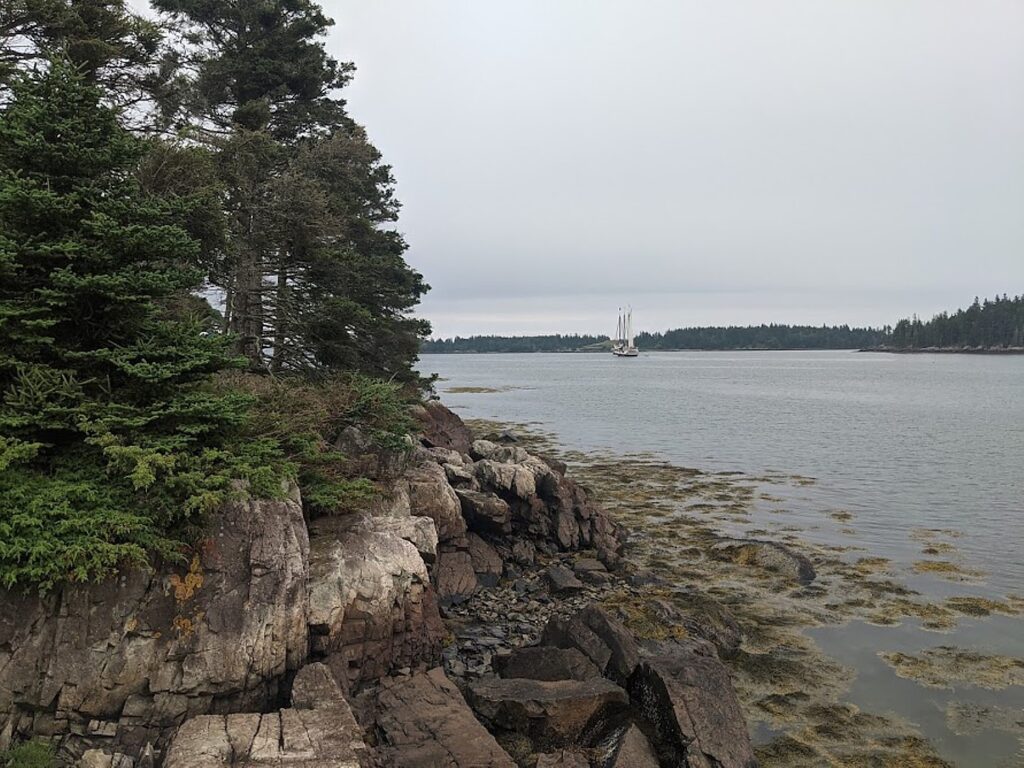
Deer Island; Little Island; Burnt Isle (privately owned, but we are allowed to walk a shoreline trail); Merchants Run – so named because of the deep water that accommodated the big ships carrying lumber, granite, cattle, which island residents would stockpile and sell to the bigger ships; Crotch Island – named for its notch – is half its original height because so much granite has been taken out to build buildings in New York City and federal courthouses.
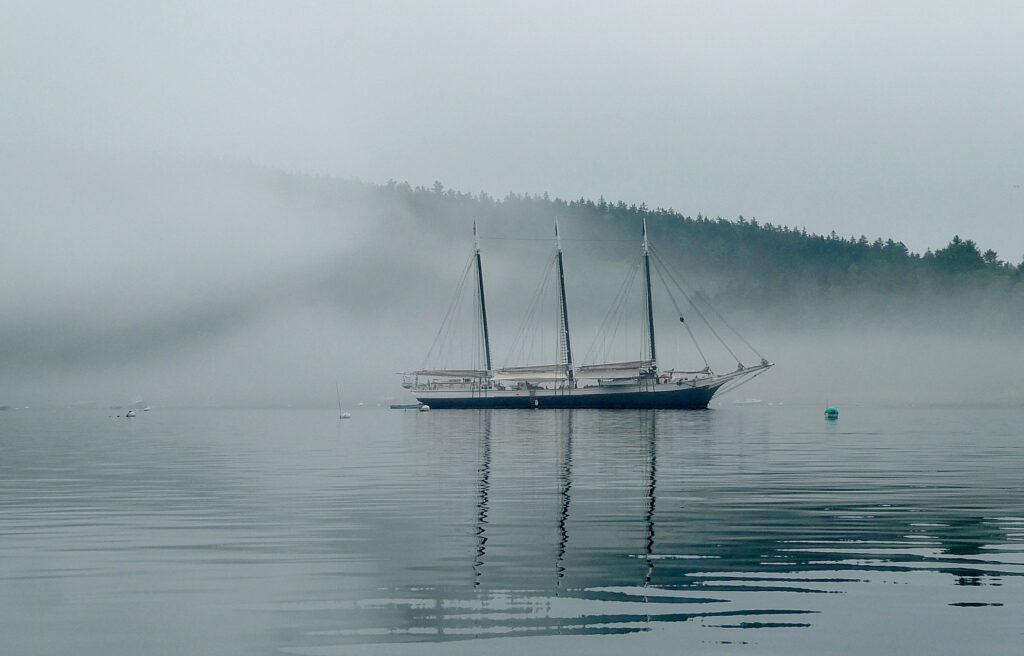
We watch as fog literally rolls in and envelops the Victory Chimes anchored in Brooksville, as we tender back to the ship. Later, anchored in Pulpit Harbor on North Haven (which, Captain Sam tells us, was mentioned by the explorer Samuel Champlain in 1515 and the osprey nest on a rock that leads into the harbor), we again watch as fog rolls in, making everything around seem to vanish as if by magic.
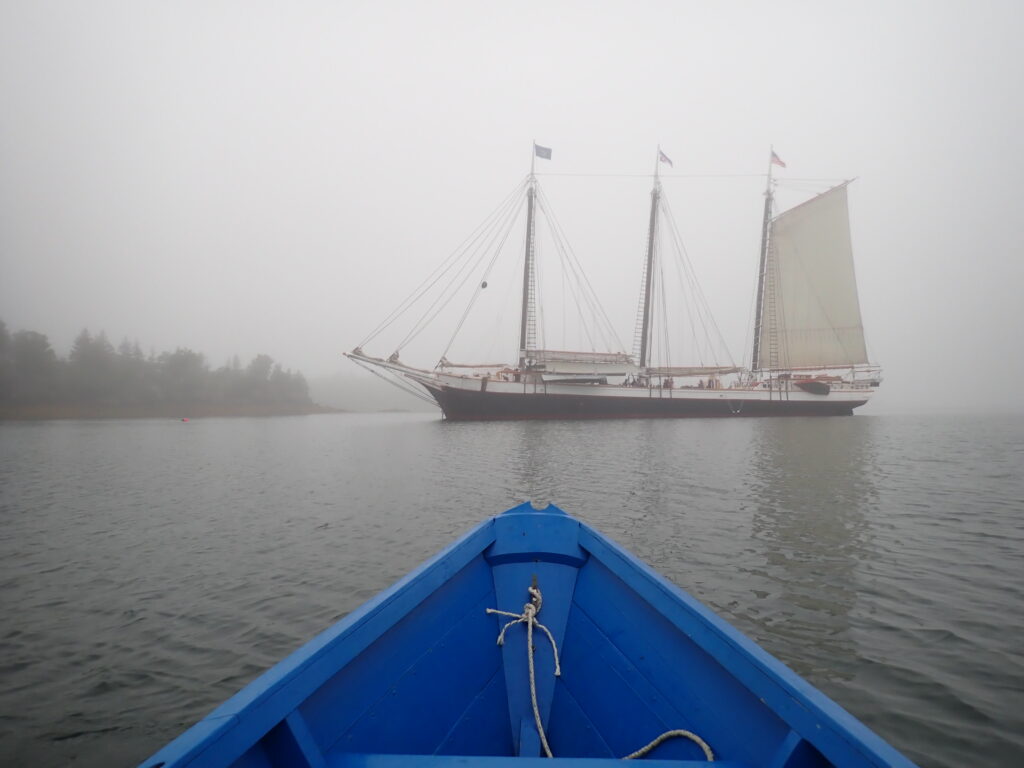
The Victory Chimes – the largest in the Maine Windjammer fleet at 128 feet and the only three-masted schooner left in North America out of 4,000 built in the Great Age of Sail – was designed to be sailed by just three, which seems amazing considering how 10 of us line up to help haul in the line to raise the sail.
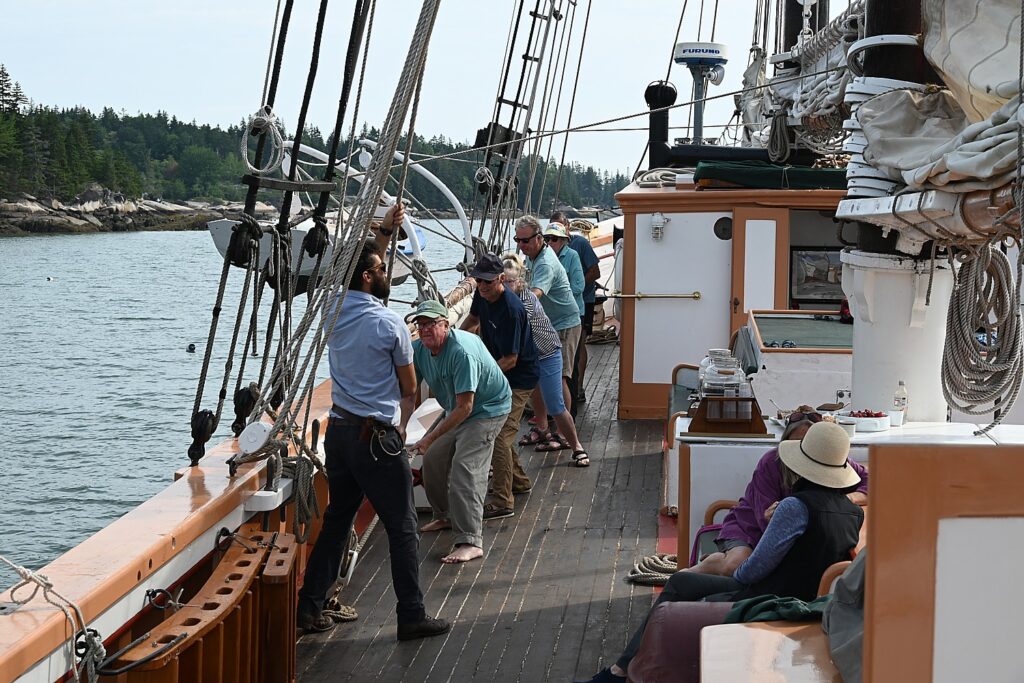
“Victory Chimes not only exemplifies the 19th and early 20th century development of large American wooden schooners intended primarily, though not exclusively, for the coasting trade on both east and west coasts, but she is the only surviving example of the ‘Chesapeake ram’ type and one of only two surviving examples of a three masted schooner in the United States.”
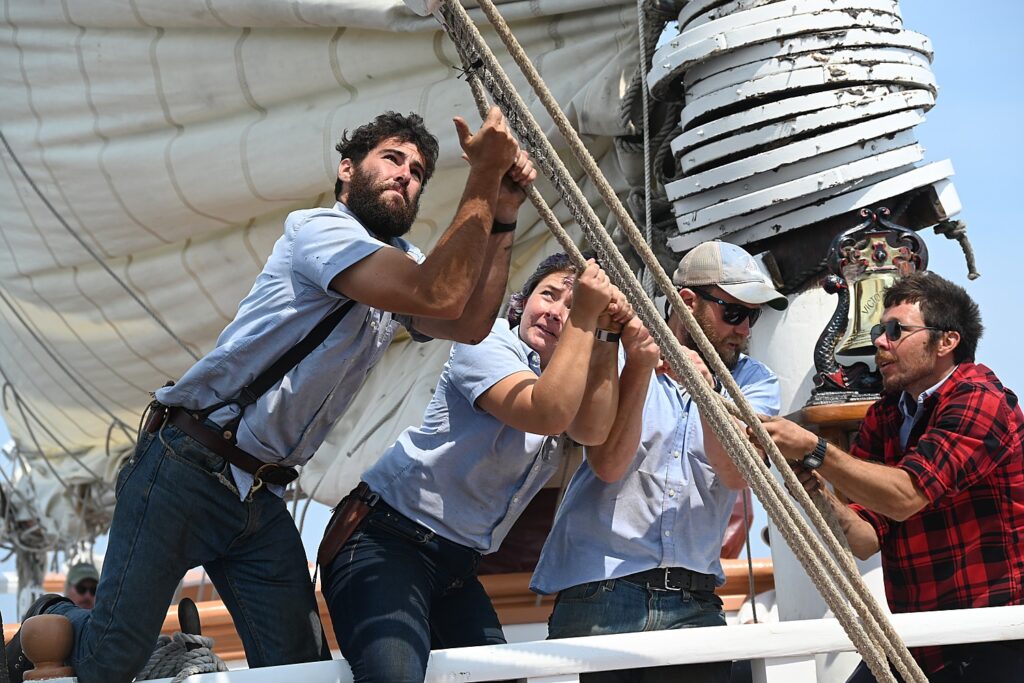
To give you an idea of just how big – and the challenge of keeping such a historic vessel sailing – the masts of Oregon Douglas fir are over 80 feet in height. “A straight tree 110 feet tall is required to get the necessary length a full 21 inches in diameter.”
There is a six-horsepower Sea Gear engine to raise the anchor (the same one that was installed in 1906 to replace the original donkey engine) but no propulsion engine, so now – as then – there is a yawlboat, Enoch, that pushes the ship when the wind is not sufficient. That innovation, indeed, is what made the Victory Chimes such a cash-cow for its original owner, who made back the $12,000 he paid to build her in 1900, in the first year.

Designed by JMC Moore, her stout build, simple rig and yawl boat made her one of the most profitable ships ever to sail. The Edwin & Maud (as it was originally named by its first Captain, Robert Riggen for his sons) was one of 30 “Ram” schooners – nicknamed for the way they “rammed through” the Chesapeake and Delaware Canal and through the sea. Victory Chimes is the last one.
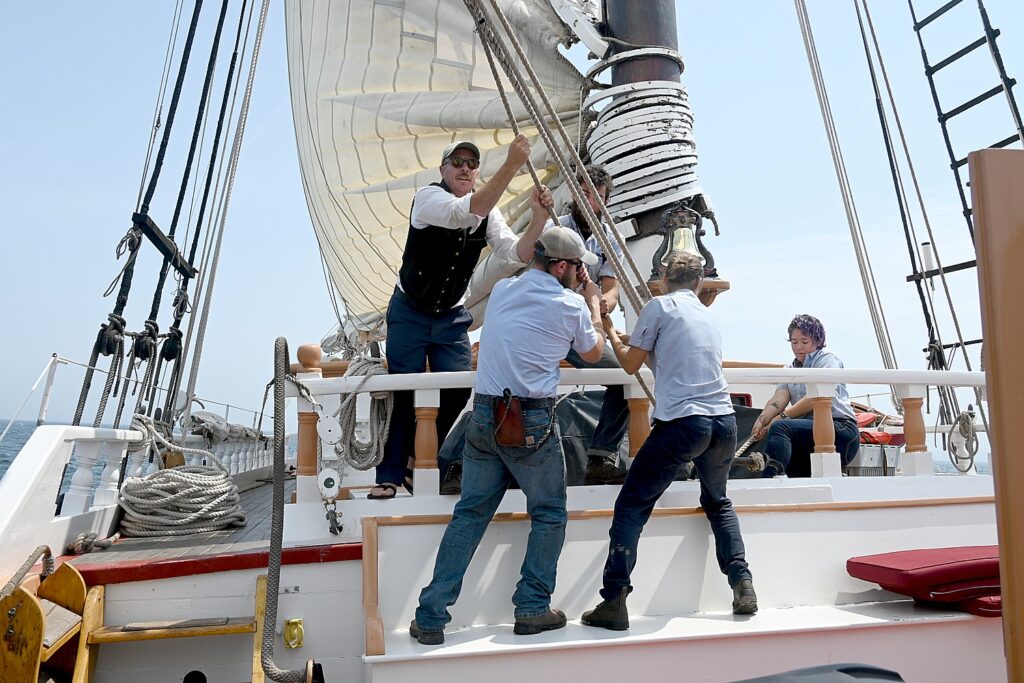
The schooner rigging – as opposed to the square rigging of ocean-going ships – was a major American innovation that allowed the vessels to be nimble and fast, and operated with a minimal number of crew for maximum profit for the owner.
Cruising each day, we get to help raise the sails, but it is really a marvel to watch the intricate ballet of the crew performing physically demanding tasks – even daring-do – such as climbing those 80-foot tall masts to repair rigging, or snapping to with agility, strength and precision, to reposition sails and rigging to sail us out of the way of a storm.
Captain Sam or Chief Mate Tripp shout commands or signal with hand gestures and the crew calls back, “Ready throat, ready peak. Mainsail halyards hoist away.”
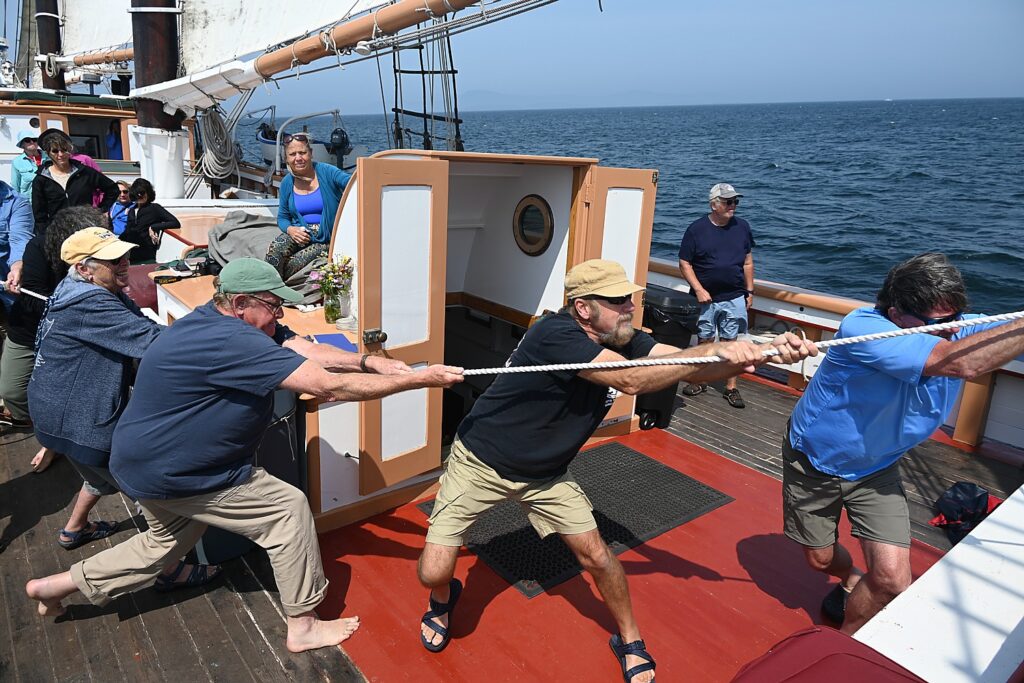
We pull rapidly, the line flying through our hands, until the line finally strains. Then comes the order to “Heave,” to which we respond “Ho” as two crew members pull down vigorously on their lines. Heave. Ho. Heave. Ho. Then, “Throat make fast. Peak make fast.”
And finally the call to “ease up” which is our order to take two steps forward followed immediately by the command, to “drop the line”.
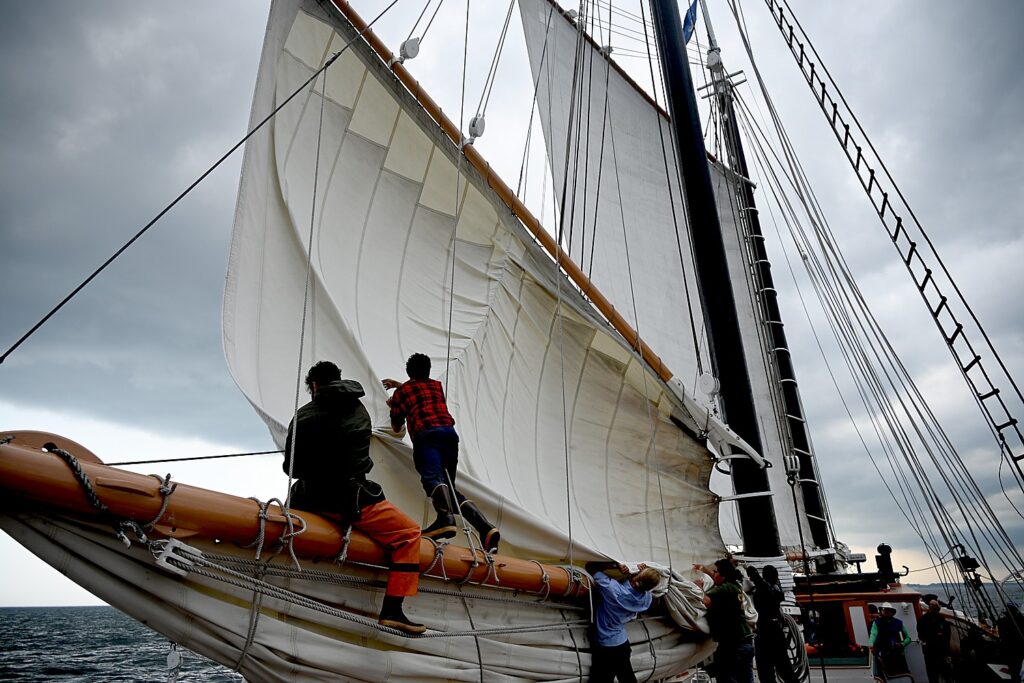
Things get exciting – and we passengers just stand quietly out of the way, watching in awe and fascination – as the crew races to maneuver Victory Chimes out of the way of a squall. Captain Sam shouts out with urgency: “Hard left. James start the boat. Ahead 2000. Take in the mizzen. Take in the outer jib, then take in everything else. Bring James his foulies!”
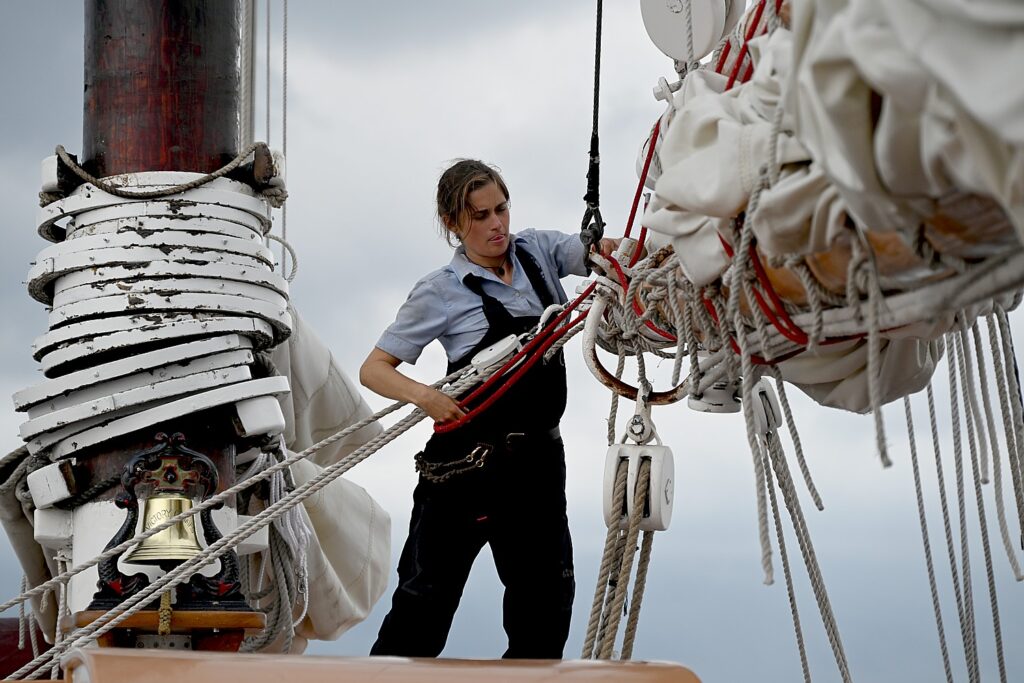
Captain Sam navigates far south, tacking to avoid the storm. “The crew mustered the hell out of that squall,” he says later with a combination of pride and relief.
I love the language of sailing – “Scandalize the fore main;” “Cast the jigger right off” – and this description of Victory Chimes’ rigging: “The traditional ‘ram’ rig was a standing jib, flying jib, staysail (also called a forestaysail), foresail, mainsail and spanker (or mizzen), which Victory Chimes carries today. The heads of the fore, main and mizzen sails are supported by gaffs and the feet are laced to booms.”
(It’s amazing how many everyday expressions come from sailing: “Above board.” “Learn the ropes.” “Know the ropes.”)
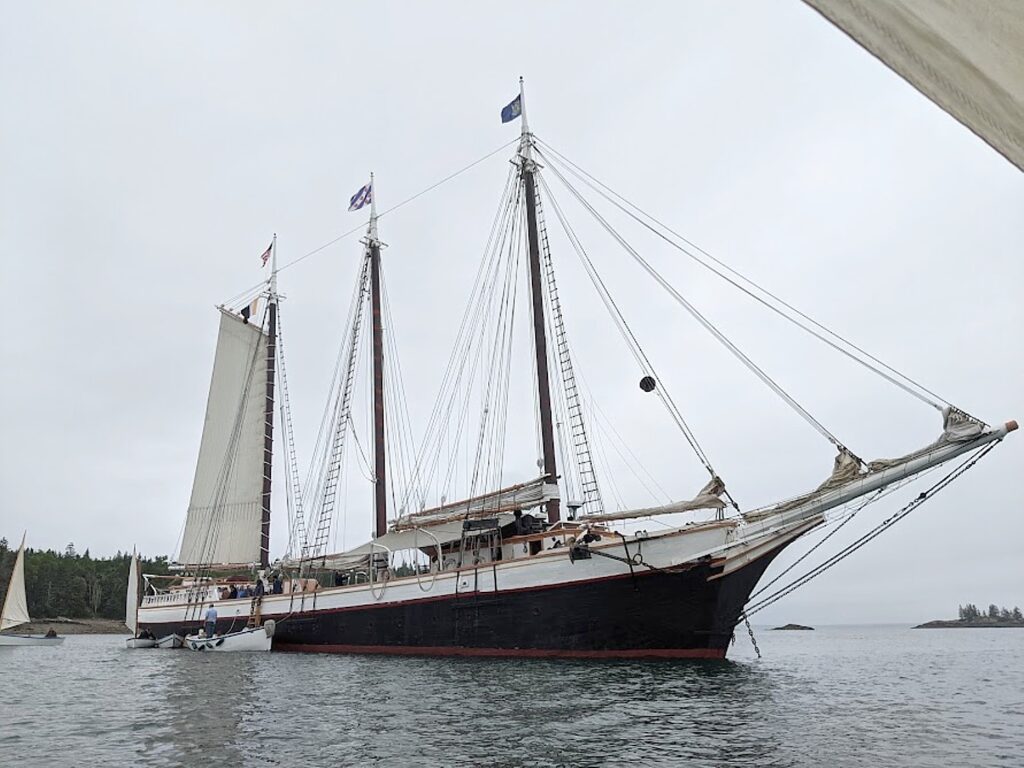
The Edwin & Maud worked carrying cargo through World War I, the Spanish Flu, the Great Depression and World War II. By 1944, still sailing as a merchant vessel out of Baltimore, Edwin & Maud monitored the anti-submarine mine field at Chesapeake Bay and kept a sharp lookout for German U-Boats.
But then, mechanization of the war effort gave rise to bigger ships that made the old wood ships uneconomical. Hundreds were burned or just left to decay.
By 1946, the Edwin & Maud ended her career transporting cargo – lumber, mainly, but also salt, pumpkins, fish scrap for fertilizer or anything to pay the freight – and was converted into a new concept of “dude cruiser” by Herman Knust of Chesapeake Bay Vacation Cruises.
Originally, where the cargo hold would have been, are now 19 cabins (15 with two-berths, two with four berths and one each with a single and a triple berth) with the main saloon and galley.
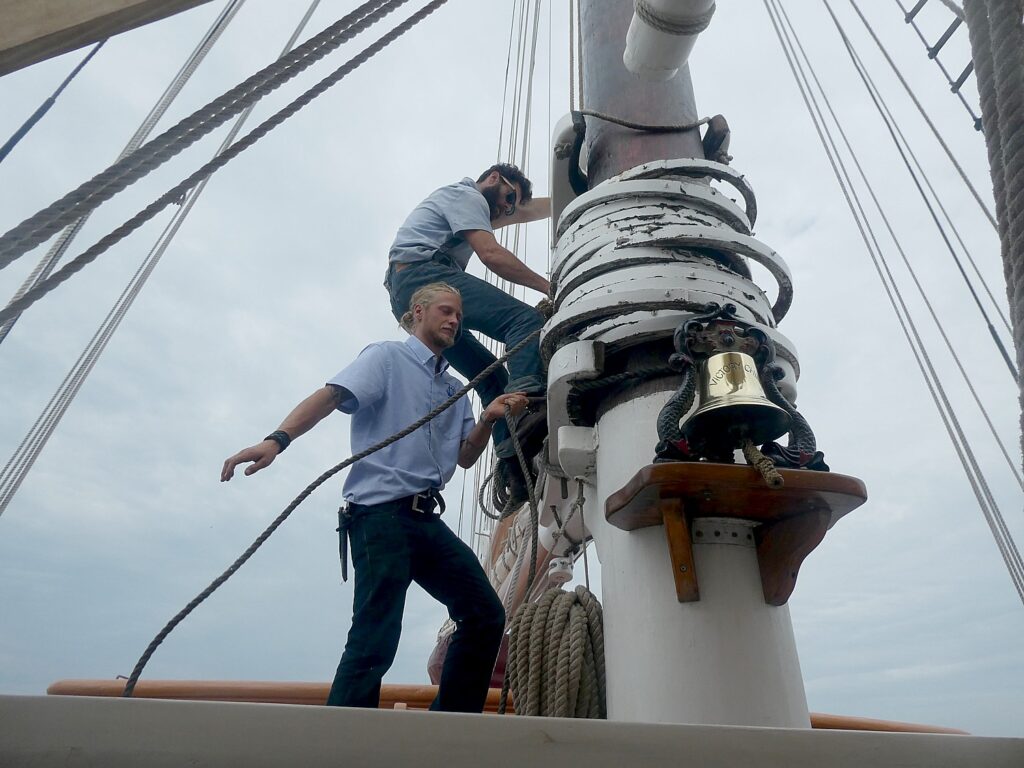
In 1954, Capt. Frederick “Boyd” Guild brought the ship to the Maine coast and renamed her Victory Chimes after a Canadian coastal schooner he admired as a boy that had been launched on Armistice Day.
She survived a succession of other owners: A Minnesota bank president wanted to sail it on Lake Superior but couldn’t get certified (his own bank foreclosed). It was purchased at auction in 1987 by Domino’s Pizza and renamed Domino Effect. When Domino’s sold off its fleet, Victory Chimes was slated to be sent to Japan to be converted into a restaurant.

Captain Kip Files and Captain Paul DeGaeta, who oversaw the Domino’s restoration, purchased the vessel to keep her from leaving the country, changed the name back to Victory Chimes and returned her to the Maine windjammer trade. Maine’s Legislature welcomed her back with a special resolution.
In 1997, Victory Chimes was named an American National Historic Landmark under the Maritime Heritage Program of the National Parks Service, becoming one of only 127 vessels with that designation. (Apparently, though, historic vessels are not entitled to tax credits as historic landmarks.)
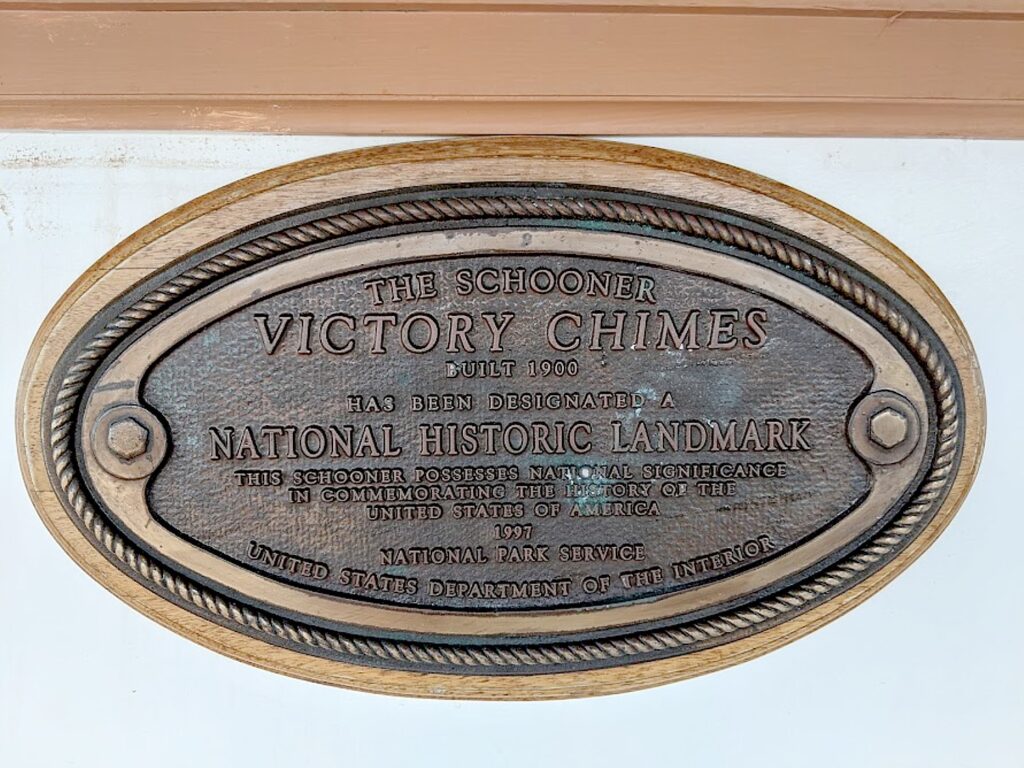
I had sailed on the Victory Chimes some years ago in the exciting annual Schooner Race with Captain Kip Files, who was her caretaker for 24 years.
Now Captain Sam Sikkema has the weighty responsibility of being Victory Chimes’ owner/caretaker. He acquired Victory Chimes in 2018 and had a great season in 2019 before being locked down by COVID-19 in 2020 – for perhaps the first year in its long history. PPP funding helped them stay afloat.
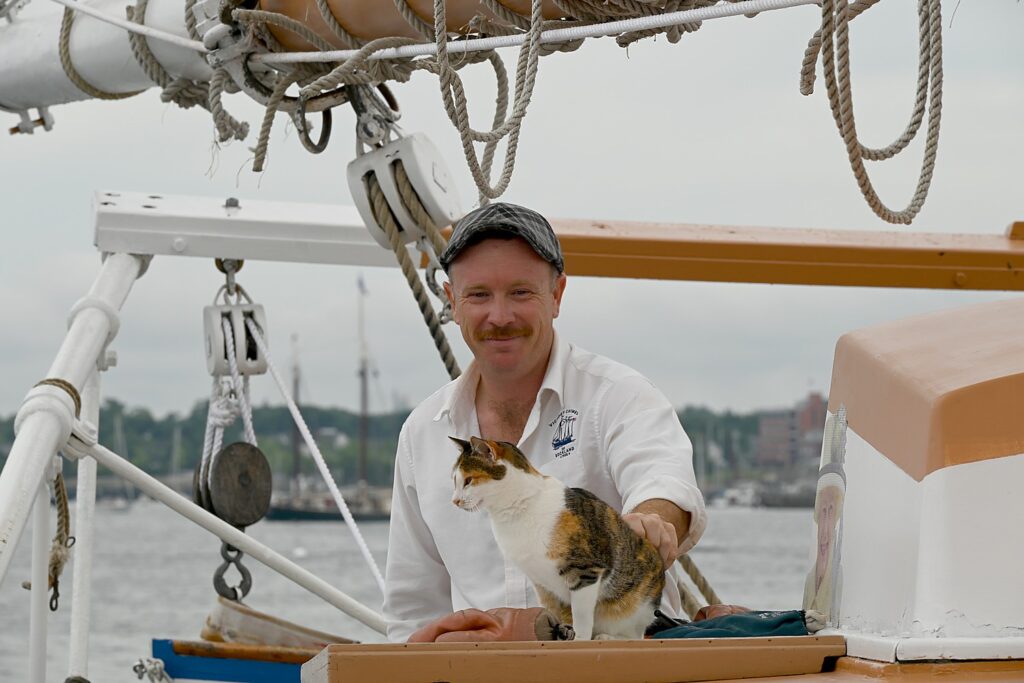
Captain Sam has had quite a sea-going career that began with sailing dinghies with his father on Lake Michigan. He has sailed around the world, on every ocean, in schooners, square riggers, training ships, yachts, fishing vessels and commercial vessels, as well as worked with maritime museums and shipyards as a carpenter and a rigger. Over the years, he sailed as crew on Niagara, Bounty, Sorlandet, Denis Sullivan, Californian, Red Witch, Nina, Robert C Seamans, Spirit of Bermuda, Alabama, Highlander Sea, Columbia, Victory Chimes and the 1841 Whaling Ship Charles W Morgan (serving as Captain Kip’s Chief Mate). He has been Captain of the sailing vessels Friends Good Will, Lynx, Tole Mour, Harvey Gamage, and the training ship Picton Castle, taking her across the North Atlantic Ocean four times. And he sailed the world with his cat, Fiji, who delights us with her antics.
“Of all the places I’ve sailed, my favorite place to sail is right here on the coast of Maine.”
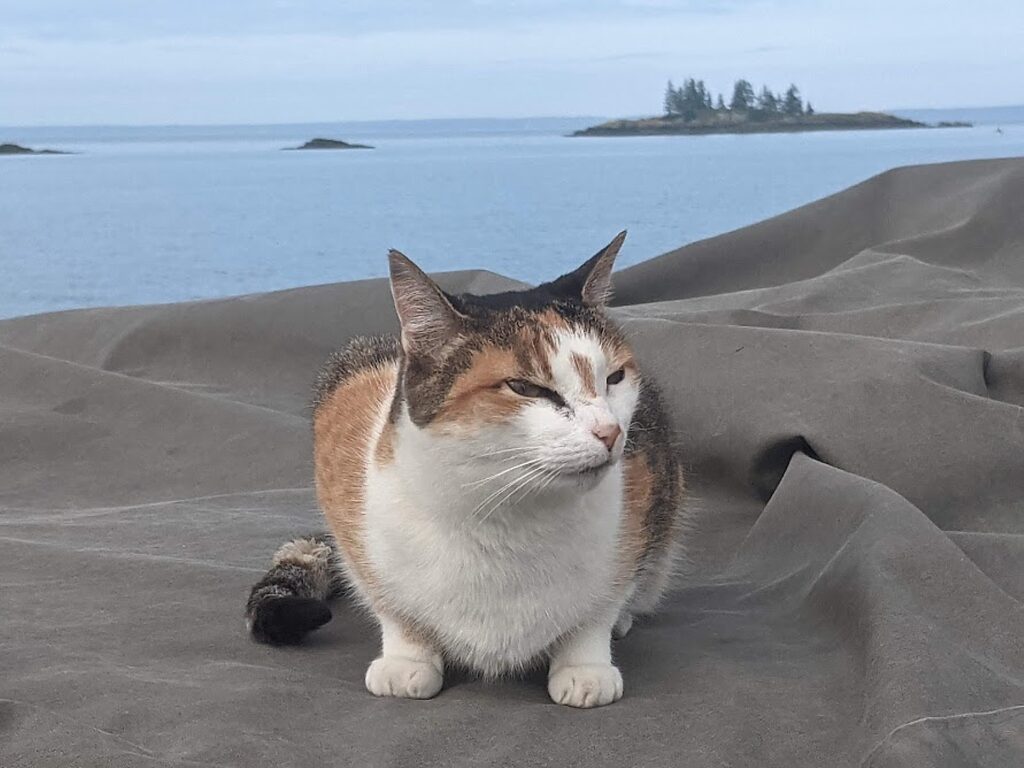
“I am truly honored to be the new caretaker of this vessel and hope to bring new life to her while holding true to the authentic nature of the experience you have enjoyed in the past,” Captain Sam writes to past Victory Chimes passengers.
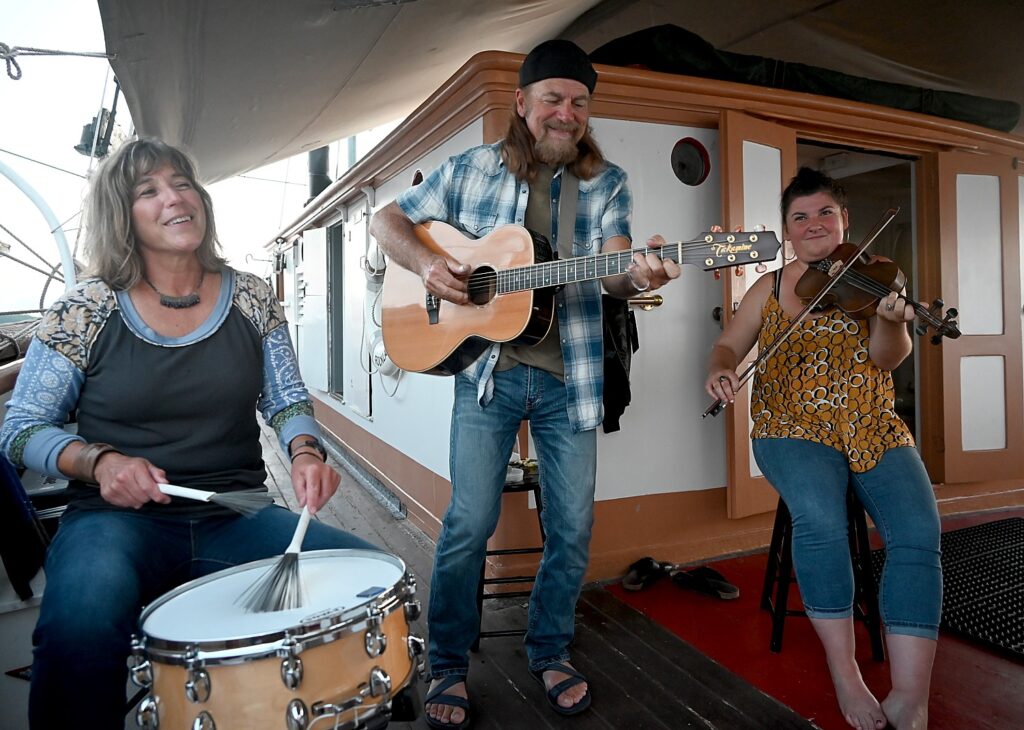
Cara Lauzon joins Mike and Amy Aiken for their Friday evening concert, when we are anchored in Rockland Harbor.

But on an evening when they aren’t performing, song spontaneously breaks out – starting with commercial jingles of our Baby Boomer youth, then going to popular rock and roll songs (Broadway musicals are not allowed).
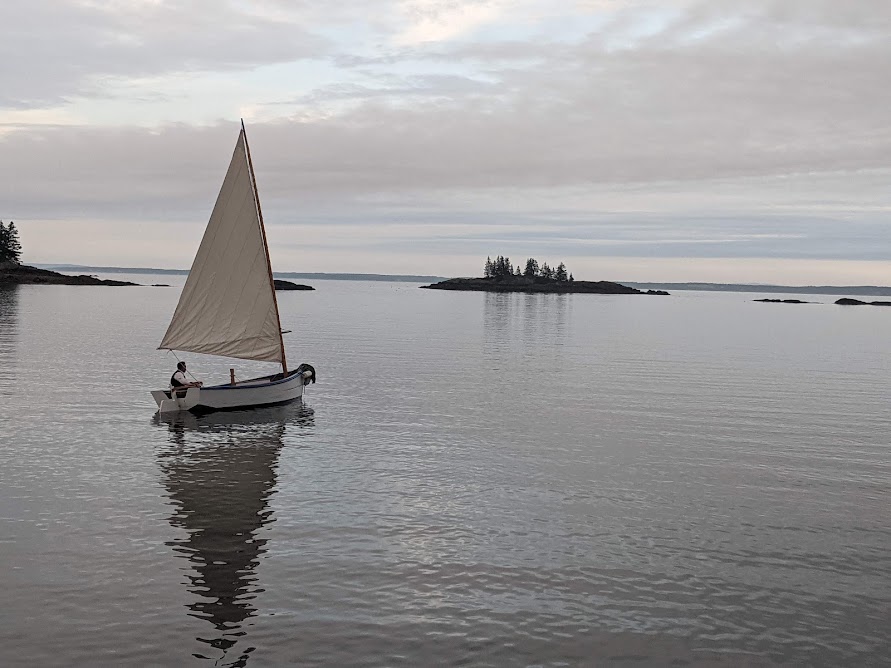
For the “A” personalities on board (Sherman, who sailed his own boat up from the Chesapeake to come on this ship, crewed a sailing ship to Antarctica; Karen and Eric were next traveling to Alaska to fish, others share stories about biking trips in Europe), a windjammer cruise provides a rare luxury to just chill out. But each evening when we anchor, Sherman is first to take out the small sailboat (as is Captain Sam), Ed grabs the rowboat, and Glenn jumps into the water for a swim.

We scan the waters for seals, porpoises, birds. The photographers among us are constantly looking out for picturesque scenes to capture, reminiscent of the great seascapes of Winslow Homer and J.M.W. Turner and the Maine landscapes immortalized by the Wyeths (which we can see in the Farnsworth Museum, in Rockland).

Even in the rain it is pleasant on board – the crew puts out awnings so we can still stay on deck if we want and the Victory Chimes, the largest of the Maine Windjammers, with a capacity for 40 passengers, has a fairly large mess area, which doubles as a kind of lounge when it is not set up for dining, where it is pleasant to spend time reading in the evening. There is always coffee and tea, fresh fruit out and whatever dessert is left over from lunch or dinner.

Eating aboard the ships is one of the distinct pleasures. I can imagine a slight rivalry among the ships for best cook, and Victory Chimes cook, Chef Adam, would easily be among the winners, especially with his freshly baked everything (not too sweet or rich). Chef Adam prides himself on researching alternatives for people who have diet restrictions.
There is a routine to the day around food: coffee is brought up to the deck at 7 am; the bell for breakfast is rung at 8 am, precisely after the flags are raised. Lunch is served at noon. Appetizers are brought up to the deck at 5 pm (there is a cooler for you to store your beer or wine, but wine is served with dinner), and dinner at 6 pm. There is always coffee and tea and fresh fruit available. Meals are served family style – breakfast in the galley, lunch and dinner mostly served on deck.
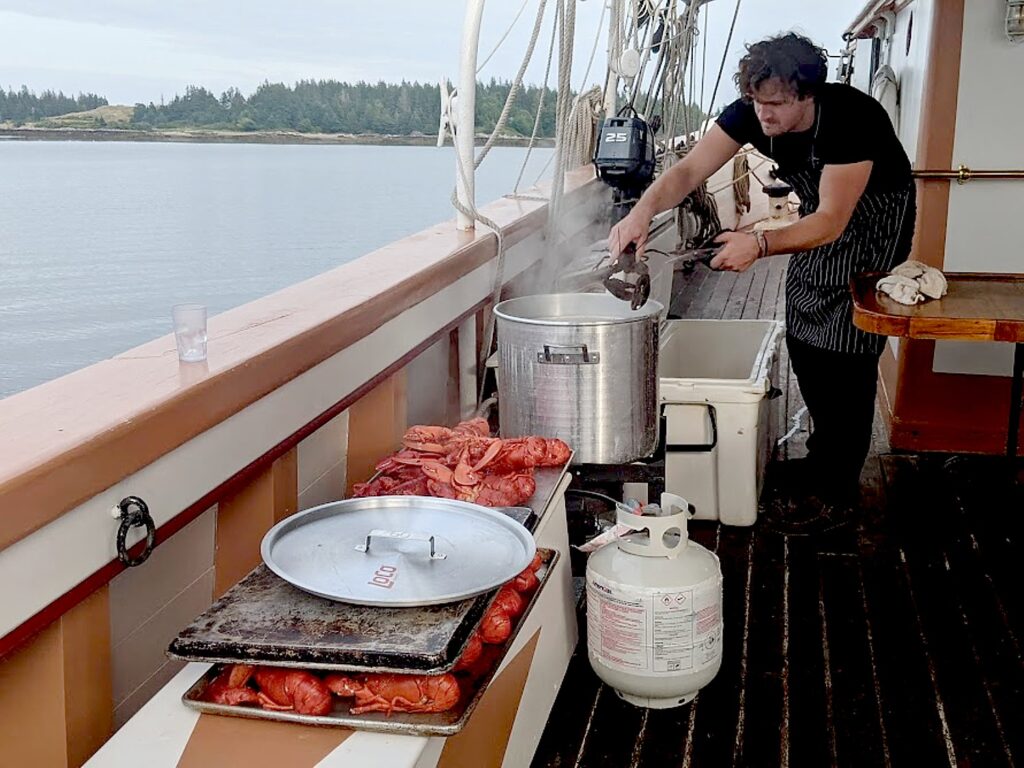
While every windjammer cruise is different, there are certain constants – the feeling of being transported back into this Golden Age of Sail and the traditional lobster dinner. Some of the captains do it on a secluded beach; others, like Victory Chimes, serve on board (as elegant as eating lobster can be) but each one is an unmatched culinary experience of the freshest, most succulent and sweetest lobster in unimaginable abundance that spoils you for lobster forever.
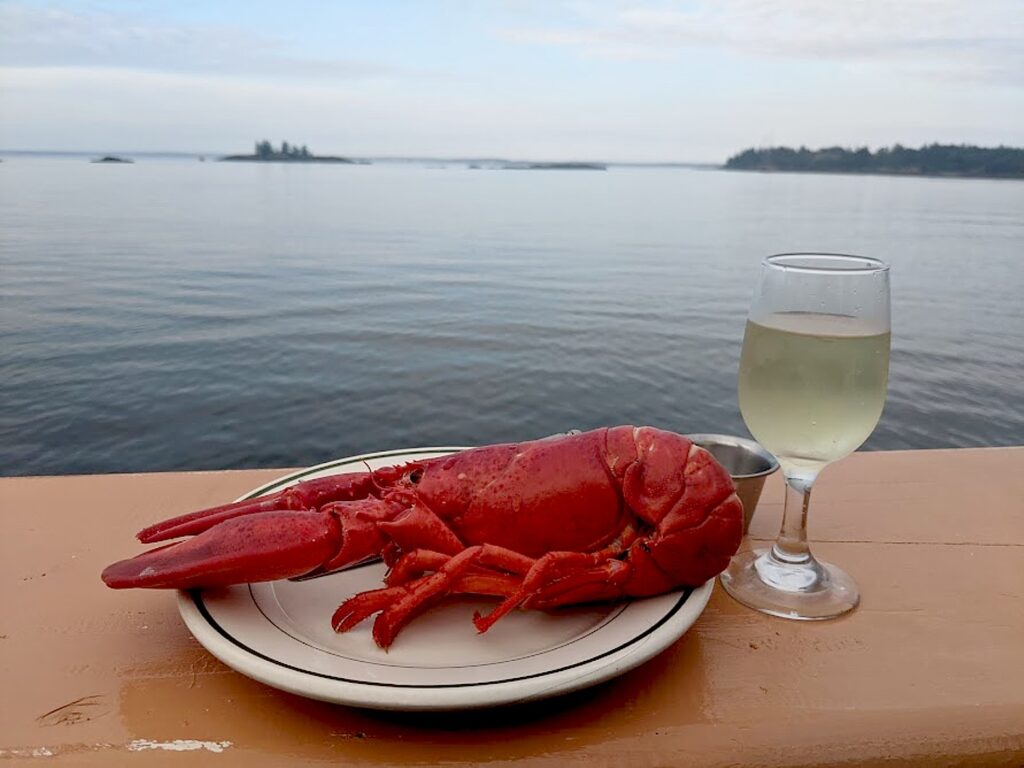
The hours spent sailing are relaxing and chilling out – like a floating beach holiday – reading, playing games like backgammon, scrabble. A group is doing macrame (usually there are knitters or knotters). But a main activity is just chatting, which is key to solving the mystery of what brought all of us together on this particular cruise.
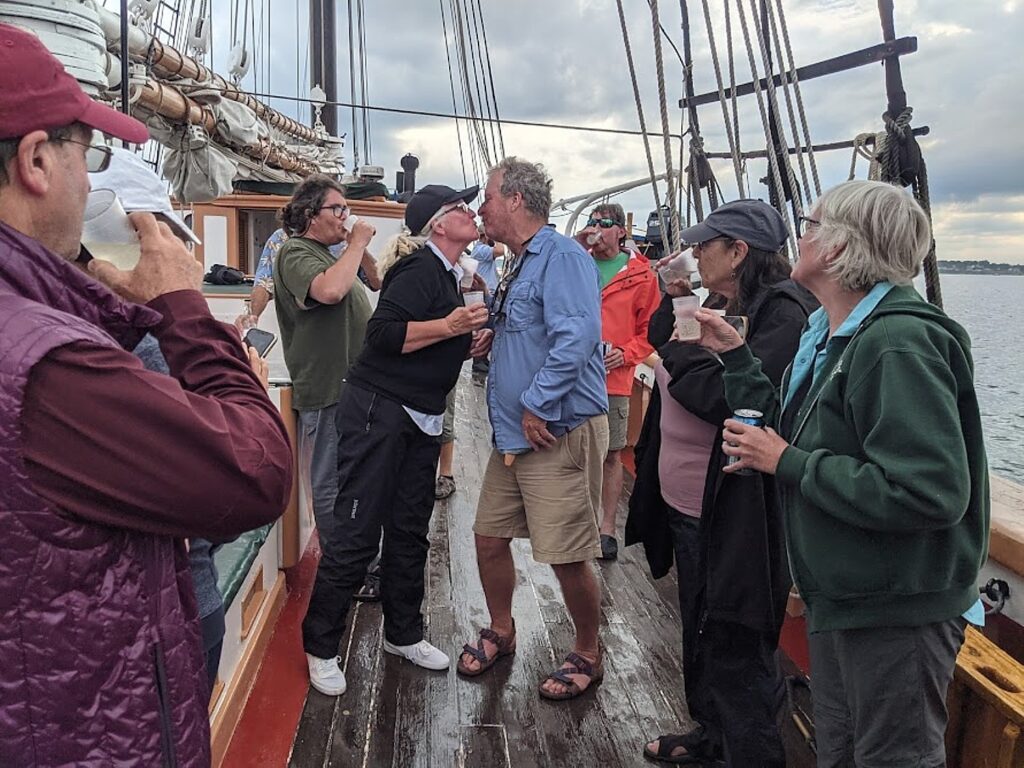
By the time we depart – having celebrated birthdays and anniversaries as if we have always been joined – Diana has thoroughly investigated and charted the connections, solving the mystery: Just about everybody – through college roommates, music, book club, Philly folk festival, sailing, childhood friendships, neighbors and family, is somehow directly or indirectly connected to the Aikens. Who is the interloper? Me. (See her diagram.)
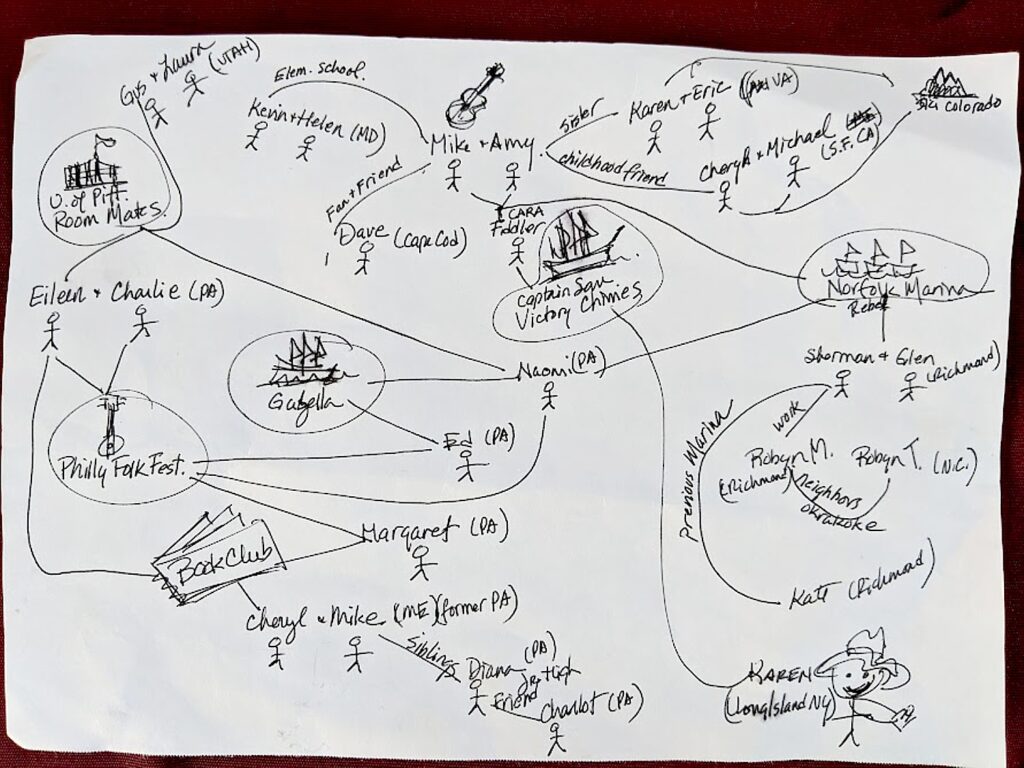
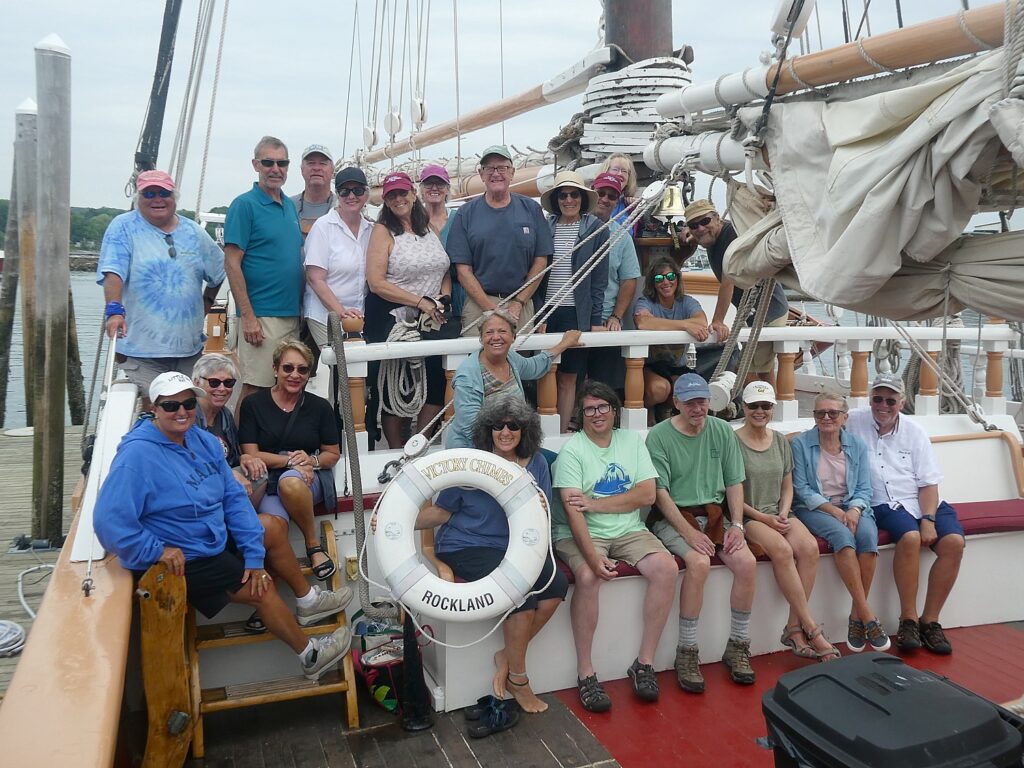

You stay overnight on Victory Chimes at the dock before departing Rockland (giving me time to enjoy Rockland and an outdoor Blues festival). On return, you depart usually by 10 am, giving you time to see the sights in Rockland – the not-to-be-missed Farnsworth Museum of Art and Homestead (www.farnsworthmuseum.org); walk the three-quarter mile long breakwater to the Rockland Lighthouse, and visit the Lighthouse Museum. If you overnight in the area (there are lovely B’n’Bs like the LimeRock Inn where I stayed on a prior visit), visit the Owl’s Head lighthouse (www.lighthouse.cc/owls/) and the Transportation Museum, both in Owl’s Head.

Definitely make time to visit the Farnsworth Museum, an absolute gem of an art museum with an extraordinary collection of Wyeths – NC, Andrew and Jamie. Reopened after the COVID-19 lockdown, it is presently showing stellar exhibits (all on through December, except for “Parallel Visions”, an astonishing exhibit matching Andrew Wyeth’s paintings with George Tice’s photos, which ends in October to make room for the Farnsworth’s annual holiday display), showcasing Maine’s role in American art. Key exhibits include “Betsy’s Gift: The Works of N.C., Andrew, and Jamie Wyeth,” “Women of Vision,” “Betsy Wyeth, Partner and Muse,” and “Transforming the Ordinary: Women in American Book Cover Design,” (Farnsworth Art Museum, 16 Museum Street, Rockland, ME 04841, 207-596-6457, [email protected], www.farnsworthmuseum.org).
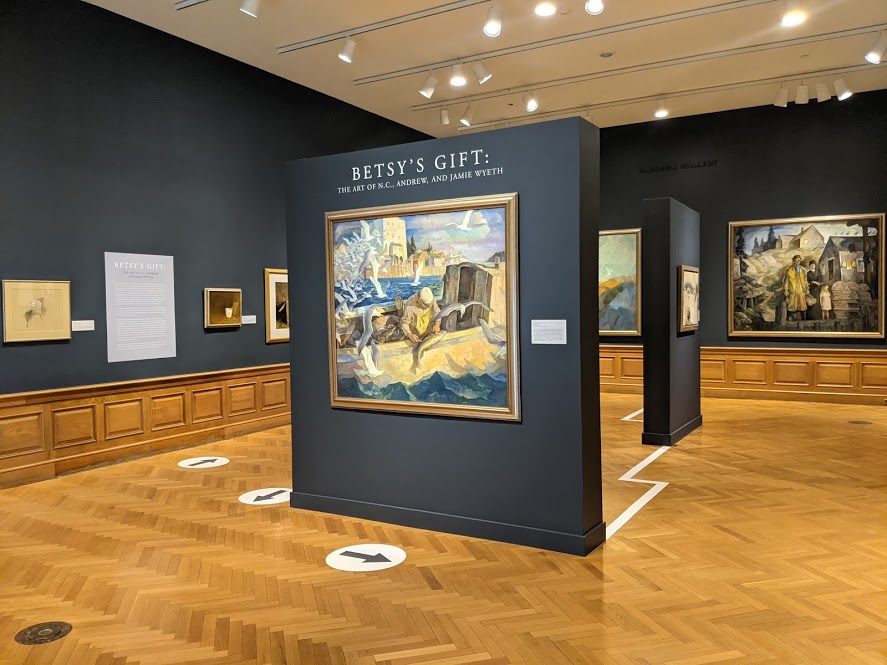
For 2021, the Victory Chimes is offering 3, 4, 5, and 6-night cruises through Sept 28.
Schooner VICTORY CHIMES, P.O. Box 1401, Rockland, ME 04841, 800-745-5651, [email protected], www.victorychimes.com.
The Maine Windjammer Association represents the largest fleet of traditional sailing schooners in North America: American Eagle, 800-648-4544; Angelique, 800-282-9989; Heritage, 800-648-4544; J. & E. Riggin, 800-869-0604; Ladona, 800-999-7352; Lewis R. French, 800-469-4635; Mary Day, 800-992-2218; Stephen Taber, 800-999-7352 and Victory Chimes, 800-745-5651. For information, 800-807-WIND; or visit www.sailmainecoast.com.
______________________
© 2021 Travel Features Syndicate, a division of Workstyles, Inc. All rights reserved. Visit goingplacesfarandnear.com, www.huffingtonpost.com/author/karen-rubin, and travelwritersmagazine.com/TravelFeaturesSyndicate/. Blogging at goingplacesnearandfar.wordpress.com and moralcompasstravel.info. Send comments or questions to [email protected]. Tweet @TravelFeatures. ‘Like’ us at facebook.com/NewsPhotoFeatures


